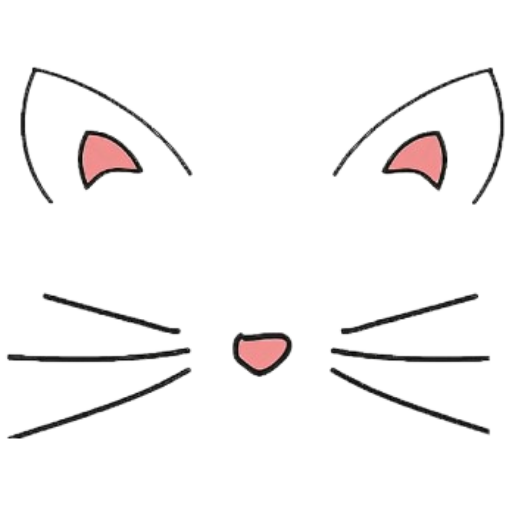Feline Communication: Unlocking the Secret Language of Cats
- No Comments
In the heart of every cat’s enigmatic behavior lies a complex system of communication that has long fascinated scientists and cat owners alike. While dogs are often lauded for their expressive nature, cats communicate in subtler and more nuanced ways that require careful observation and understanding. The intricate language of cats is not just about meowing; it encompasses a rich tapestry of vocalizations, body language, and even scent marking.
At the core of feline communication is the meow, a versatile vocalization that cats use primarily to communicate with humans. Unlike the barking of dogs, which is often directed at both humans and other dogs, meowing is a unique interaction reserved for the human-cat relationship. Research has shown that cats can modulate their meows to convey a range of messages, from a simple greeting to urgent demands for food. Some studies suggest that cats have developed meows that mimic the pitch and frequency of a human baby’s cry, tapping into our innate response to nurture.
However, vocalizations are just a fraction of how cats communicate. Body language plays a pivotal role in conveying emotions and intentions. A cat’s tail, for instance, is a dynamic tool for expression. A high-held tail often signals confidence and contentment, whereas a flicking or lashing tail may indicate irritation or agitation. The subtle nuances of ear position, eye dilation, and whisker orientation also provide clues to a cat’s mood. For example, forward-facing ears and relaxed whiskers typically suggest a cat is in a friendly and approachable state.
Beyond what meets the eye, cats utilize scent as a powerful form of communication. Glands located on their cheeks, forehead, and paws release pheromones that are used to mark territory and create a sense of familiarity and security. When a cat rubs its face against a person or object, it is not merely seeking affection but is marking its territory with its scent. This scent marking serves as a comforting reminder of their presence and ownership.
For multi-cat households, understanding feline communication becomes even more critical to maintaining harmony. Cats are territorial creatures, and misinterpretations of communication signals can lead to conflicts. Introducing cats to each other should be done gradually, allowing them to become familiar with each other’s scents before face-to-face interactions. Observing their body language and vocalizations during these introductions can provide valuable insights into their comfort levels and help prevent potential disputes.
Despite the strides made in understanding cat communication, much remains to be discovered. Recent advancements in technology, such as AI-driven apps and collar devices, are being developed to translate cat vocalizations into human language. While these innovations are still in their infancy, they hold promise for deepening the human-cat bond by fostering a better understanding of our feline companions.
In conclusion, the language of cats is a sophisticated system that goes beyond mere vocalizations. It is a harmonious blend of sounds, movements, and scents that require attentiveness and patience to interpret. As we continue to unravel the mysteries of feline communication, we not only enhance our relationships with these captivating creatures but also gain a greater appreciation for the unique ways they communicate their needs, desires, and affection.

In the heart of every cat’s enigmatic behavior lies a complex system of communication that has long fascinated scientists and cat owners alike. While dogs are often lauded for their expressive nature, cats communicate in subtler and more nuanced ways that require careful observation and understanding. The intricate language of cats is not just about meowing; it encompasses a rich tapestry of vocalizations, body language, and even scent marking.
At the core of feline communication is the meow, a versatile vocalization that cats use primarily to communicate with humans. Unlike the barking of dogs, which is often directed at both humans and other dogs, meowing is a unique interaction reserved for the human-cat relationship. Research has shown that cats can modulate their meows to convey a range of messages, from a simple greeting to urgent demands for food. Some studies suggest that cats have developed meows that mimic the pitch and frequency of a human baby’s cry, tapping into our innate response to nurture.
However, vocalizations are just a fraction of how cats communicate. Body language plays a pivotal role in conveying emotions and intentions. A cat’s tail, for instance, is a dynamic tool for expression. A high-held tail often signals confidence and contentment, whereas a flicking or lashing tail may indicate irritation or agitation. The subtle nuances of ear position, eye dilation, and whisker orientation also provide clues to a cat’s mood. For example, forward-facing ears and relaxed whiskers typically suggest a cat is in a friendly and approachable state.
Beyond what meets the eye, cats utilize scent as a powerful form of communication. Glands located on their cheeks, forehead, and paws release pheromones that are used to mark territory and create a sense of familiarity and security. When a cat rubs its face against a person or object, it is not merely seeking affection but is marking its territory with its scent. This scent marking serves as a comforting reminder of their presence and ownership.
For multi-cat households, understanding feline communication becomes even more critical to maintaining harmony. Cats are territorial creatures, and misinterpretations of communication signals can lead to conflicts. Introducing cats to each other should be done gradually, allowing them to become familiar with each other’s scents before face-to-face interactions. Observing their body language and vocalizations during these introductions can provide valuable insights into their comfort levels and help prevent potential disputes.
Despite the strides made in understanding cat communication, much remains to be discovered. Recent advancements in technology, such as AI-driven apps and collar devices, are being developed to translate cat vocalizations into human language. While these innovations are still in their infancy, they hold promise for deepening the human-cat bond by fostering a better understanding of our feline companions.
In conclusion, the language of cats is a sophisticated system that goes beyond mere vocalizations. It is a harmonious blend of sounds, movements, and scents that require attentiveness and patience to interpret. As we continue to unravel the mysteries of feline communication, we not only enhance our relationships with these captivating creatures but also gain a greater appreciation for the unique ways they communicate their needs, desires, and affection.


